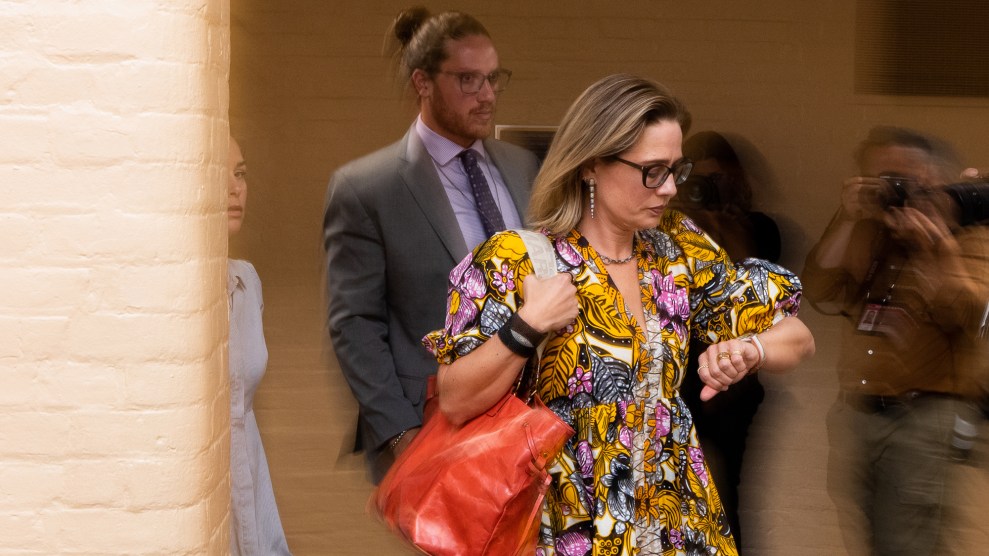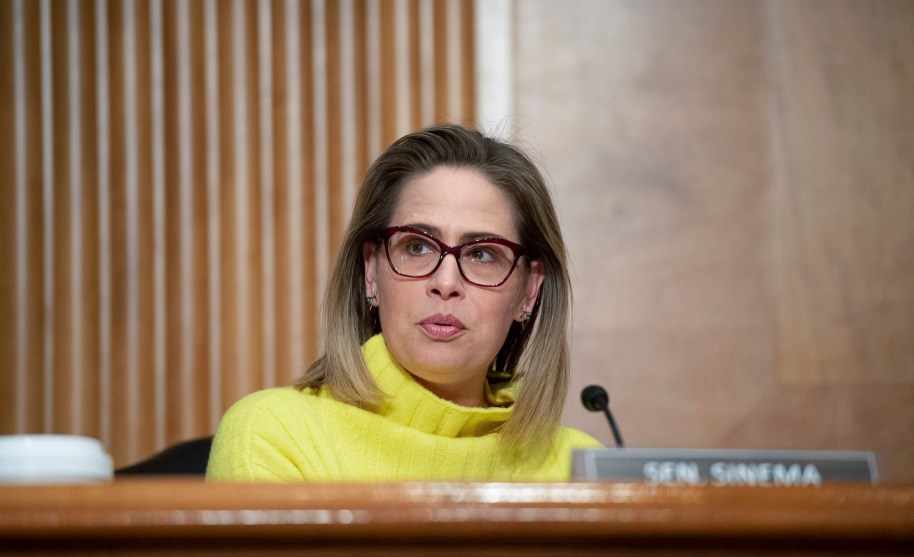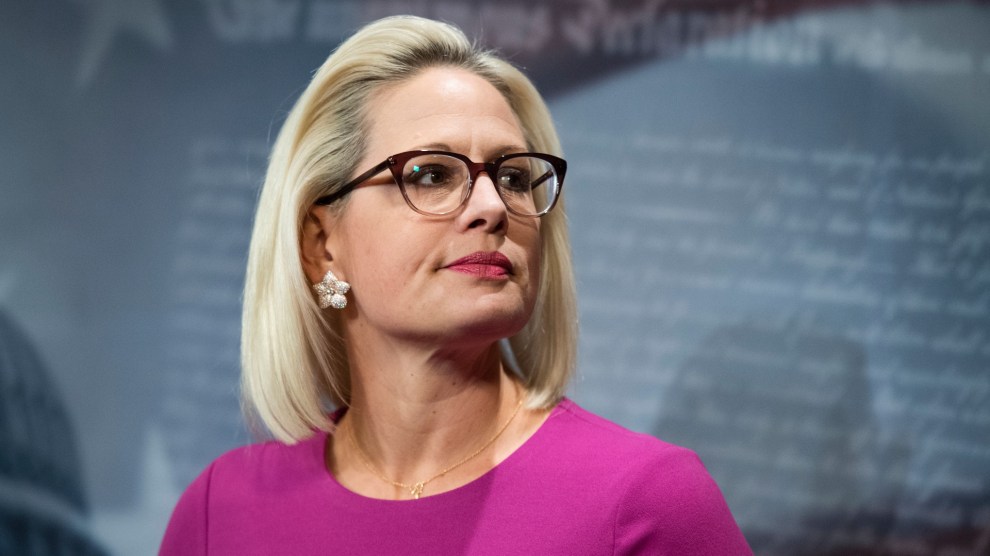
Bill Clark/Congressional Quarterly/ZUMA
After switching her party affiliation from Democratic to independent in 2022, Arizona Sen. Kyrsten Sinema didn’t really act like someone who was planning on sticking around Washington for the long haul. Her fundraising stagnated and her campaign wasn’t bothering to collect signatures. She was polling a very distant third in a hypothetical general election, behind Democratic Rep. Ruben Gallego and the election-denying former TV news anchor Kari Lake. On Tuesday, she made it official: she’ll leave the Senate at the end of her term next year, rather than seek another six-year stint as an independent.
A message for Arizonans from Senator Kyrsten Sinema pic.twitter.com/1XWFSWgGdh
— Kyrsten Sinema (@SenatorSinema) March 5, 2024
Most retirement announcements are fairly anodyne. Sinema’s is a bit more pointed. She is quick to identify her accomplishments—which included codification of marriage equality; a gun-control bill; and the $1 trillion infrastructure law. But Sinema also wants to talk about why she wasn’t even more successful—namely, other people.
“These solutions are considered failures, either because they’re too much, or not nearly enough,” she says. “The outcome, less important than beating the other guy. The only political victories that matter these days are symbolic—attacking your opponents on cable news or social media. Compromise is a dirty word.”
“I believe in my approach,” she continues, “but it’s not what America wants right now.”
Politicians often lament partisanship upon departing the arena (here’s a classic of the genre from Evan Bayh, shortly before taking a job at more or less every company that once had business before him) but Sinema made it a focal point of her career. As I reported in a story for the magazine a few years ago, she started her political life as a Green Party activist and entered public office as an outspoken progressive. But as her profile grew, she began pushing an alternative path to political success built on relationships and moderation. This shift was canonized in a book called Unite and Conquer: How to Build Coalitions That Win and Last.
Sinema’s book was styled as a manual for progressives looking to get things done. (When I wrote the piece, progressives in Arizona were studying it to try to better understand her.) Sinema was a loyal Democrat at the time, but she had spent her entire career in the minority and was sick of losing, so she learned to make Republican friends and pick her battles. That strategy intensified as she made her way in Washington, but there was something else that seemed to change. You could say that as the years went by she went from somebody who thought earnestly about what interest groups and partisans were getting wrong in their approach, to someone who more narrowly acted like only she could get it right.
In practice, that often manifested as a calculated political aloofness. She rarely gave interviews. She avoided town halls. She preferred to speak to business groups, or better yet, donors. She flew private jets. She spent a substantial amount of time in office competing in triathlons. At one point, she even did an internship at a winery. That the winery was also owned by a private-equity exec—and Sinema emerged in her later years as the industry’s great behind-the-scenes defender—only adds to the mystique. She didn’t do herself any favors, electorally speaking, with that approach. I’ve scanned Sinema’s book several times and couldn’t find a chapter advising politicians to burn bridges and blow off old allies.
In rare interviews, Sinema painted herself as someone who could get past the logjams of Washington by focusing on policy and personality over partisanship. And she sometimes did. There was a timeline in which Sinema was sort of a modern master of the Senate, bringing Bill Cassidy and Chris Murphy and whomever else together to do targeted, iterative stuff. The problem was that that timeline was unfolding within a much bigger one, in which half of her colleagues were in the thrall of a corrupt and aspiring dictator and the other half were simply not. She never really rose to the point of recognizing that, or the implications that that reality had on the work that needed to be done, or the window in which it even could. At a time of historic asymmetry, the best she could offer was some variation of “both sides,” and an ahistorical vision of cooperation.
To that end, there was one big thing missing from Sinema’s video: Her recent work on a bipartisan border-security package, which fizzled dramatically in the face of Republican opposition, as soon as it was introduced last month. It would be unfair to pin any of that failure on Sinema—immigration-reform bills have started and stalled periodically for two decades. But its defeat was a fitting capstone nonetheless, before she takes her turn on the corporate board and private-equity circuit.
It wasn’t just that someone who used to walk through the desert with No More Deaths, who used to hang out by the border monitoring Minutemen groups, and who rallied for a path to citizenship, was pushing what is essentially a conservative bill that beefed up border security without any of the tradeoffs Democrats have long demanded. It was also what that failure revealed about the world in which she worked—partisanship, in the Trump era, isn’t something you can simply unite and conquer.
















